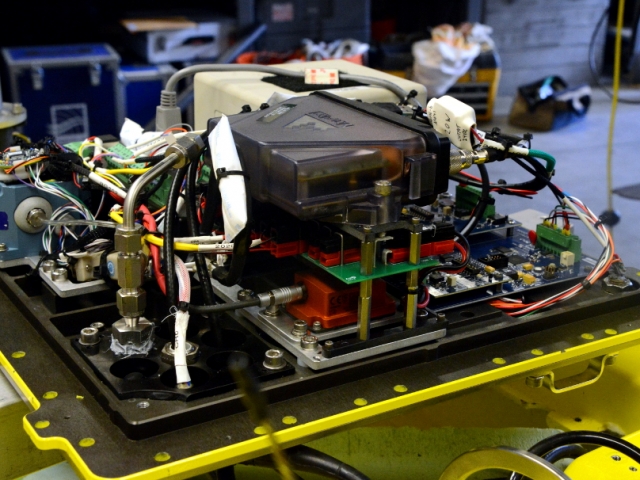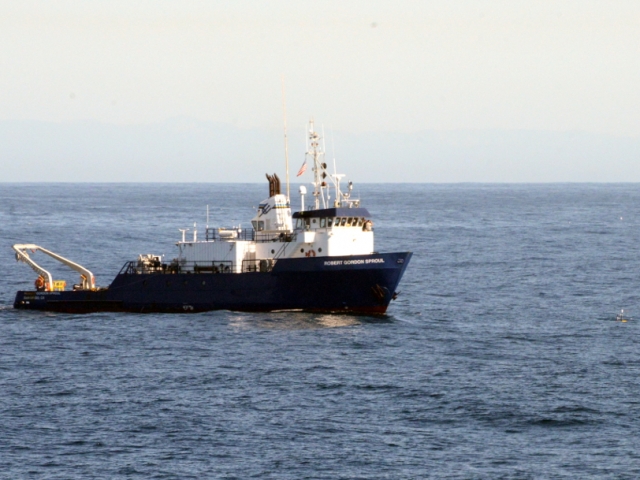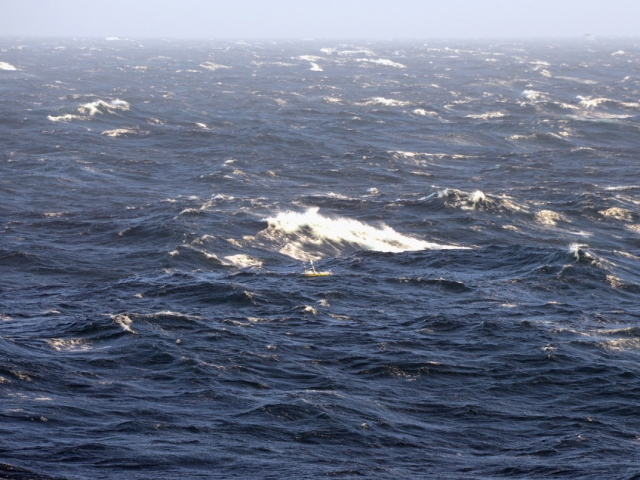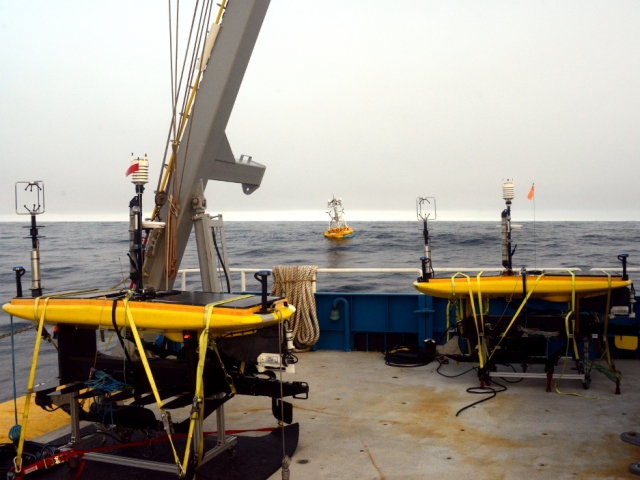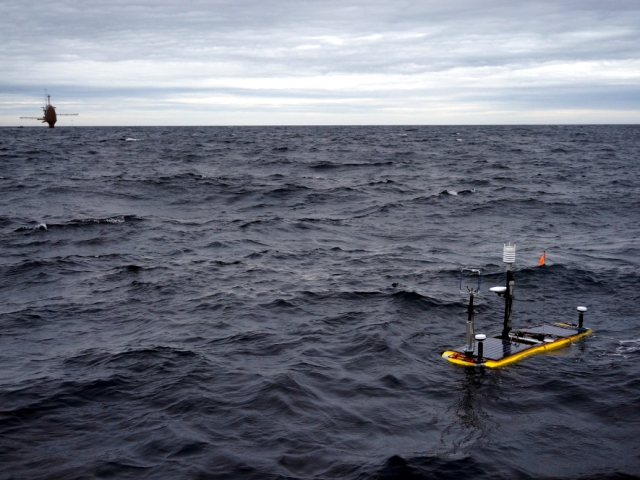Liquid Robotics Wave Glider
The Liquid Robotics Wave Glider (versions SV2 and SV3) is an ocean-wave-propelled autonomous surface vehicle with a two-body design. The lower portion, called the glider, is tethered to the surface float (2.1m x 0.6m SV2 footprint, 3.0m x 0.7m SV3) portion of the vehicle by an umbilical cable (7m-long umbilical SV2, 8m-long SV3). The fins on the glider pivot to convert the orbital motion of ocean waves into a horizontal force that tows the instrumented surface float forward. The updated SV3 model is larger with additional solar charging potential and also includes an electric thruster for supplementary propulsion as well as an optional electric winch mounted to the glider for subsurface sensor profiling. Solar panels are mounted on the float (2x 43W panels SV2, 3x 64W SV3) to supply power for the navigation and communication systems as well as any onboard instrumentation. Sealed payload bays beneath the solar panels can house data acquisition systems and supporting electronics for sensors that can be installed above or below the ocean surface on the glider, along the umbilical, or on the float. The Air-Sea Interaction Lab currently operates a fleet of four Wave Gliders with two SV3 and two SV2 models instrumented as detailed below.
Wave Glider SV3 Instrumentation:
Gill R3-50 sonic anemometer
Paroscientific MET216 static pressure sensor
Vaisala WXT530 weather station
Airmar 200WX weather station, GPS receiver, IMU
PME TCHAIN temperature node chain from 0.5m down to 8m depth
Seabird GPCTD conductivity, temperature, and pressure sensor at surface
Teledyne RDI Workhorse downward-looking acoustic doppler current profiler at surface
Nortek Signature 1000 upward-looking current profiler at 8m depth
Airmar CS4500 water speed sensor (sub for Airmar DX900+ on second SV3)
Hemisphere V104 dual GPS receiver
RBR Concerto conductivity, temperature, and pressure profiling from 8m to 150m depth
Novatel SPAN OEM7720 GPS Receiver with Dual GPS Antennas and Epson EG320N IMU
Wave Glider SV2 Instrumentation:
Gill R3-50 sonic anemometer
Paroscientific 202BG static pressure sensor (sub for Paroscientific MET216 on second SV2)
Vaisala WXT520 weather station
PME TCHAIN temperature node chain to 45m depth
Seabird GPCTD (x2) ocean conductivity, temperature, and pressure sensor at surface and 7m depth
Teledyne RDI Workhorse downward-looking acoustic doppler current profiler at surface
Nortek Signature 1000 upward-looking current profiler at 7m depth
Airmar DX900+ water speed sensor
Hemisphere V104 dual GPS receiver
XSens MTi-300 AHRS IMU
Novatel SPAN CPT IMU with Novatel Flexpak GPS Receiver and Dual GPS Antennas
Wave Glider Media
Datasheet PDF for our instrumented Wave Glider.

Image gallery of Wave Gliders in the field and in the lab. Click on images for description.
Deployment of a Wave Glider near the Pioneer Buoy Array on the R/V Connecticut in September, 2018.
Wave Glider Related Publications
A selection of Wave Glider related publications:
Instrumented Wave Gliders for Air-Sea Interaction and Upper Ocean Research (Grare et al., 2021)
A Sensor Package for Mapping pH and Oxygen from Mobile Platforms (Bresnahan et al., 2016)





